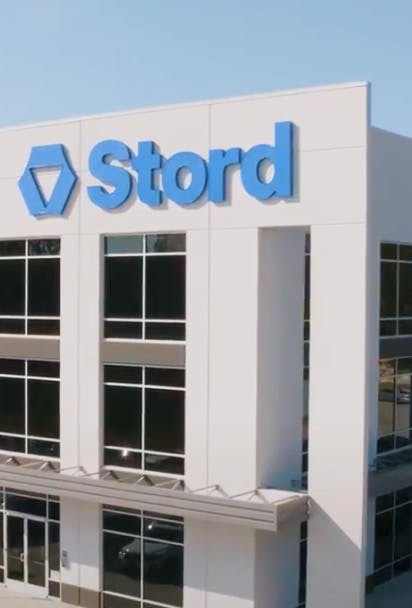Order fulfillment can make or break a retailer’s e-commerce business strategy. As the supply chain step that processes and delivers customer orders, fulfillment is crucial in the competition for best customer delivery experience. With the rapid rise of e-commerce over the last decade, limited warehousing space, higher customer expectations for 2-day shipping and an over-saturated parcel delivery network, order fulfillment is a challenge, to say the least. If done well, e-commerce stores can become a company’s competitive advantage. But if customers don’t have fast shipping options when they check out or they have a bad delivery experience, they may not make another purchase from that company, if they make one at all.
Before embarking on a new e-commerce business or expanding on an existing one, nail down the basics of the fulfillment process.
How the order fulfillment process sets a retailer apart
In an online market that’s becoming more crowded with the help of e-commerce stores like Shopify and Amazon Prime and the accessibility of parcel networks like UPS and FedEx, retailers can’t afford for their e-commerce shipments to be anything less than fast, cost-effective and accurate. Among the top causes for shopping cart abandonment are unexpected shipping rates and undesirable delivery times - 58% of consumers say they’ve purchased from one company over another because they offered more delivery options, and almost 38% of customers say they won’t shop with retailers again at all after a negative delivery experience.
Now is the time to test and optimize order fulfillment strategies, as 42% of consumers say they plan on shopping online even more after the pandemic than they do now [Related: Predicting the Future of Supply Chains Post-COVID-19]. Here’s everything you need to know about the basics of e-commerce fulfillment.
Steps of Fulfillment Operations
Fulfillment is a logistics process typically comprised of:
Receiving
The process of unloading truckloads of inventory, receiving also includes checking for damages. Any missing or damaged SKUs must be recorded immediately in order for the e-commerce sales system to reflect an accurate count of inventory available for shipping. Depending on the e-commerce fulfillment provider and transportation carrier, this step may also involve additional delivery coordination and complications like trucking wait fees or trucking appointments.
Storing
Next up is warehouse management. Inventory needs to be organized and stored, but where is dependent on the location of the customers, which may vary per SKU or sales channel. If companies anticipate capacity to fluctuate throughout the year with seasonal demand, they may want to consider flexible capacity solutions to save costs [Related: The Stord Cloud Supply Chain].
Logistics services also vary per facility, so know what types of shipments they specialize in before signing a contract. If fulfillment is outsourced, be aware that some fulfillment centers can be very costly to store at and require precise inventory turns to avoid stocking out.
Pick and Pack
After receiving an order, a fulfillment center employee will pick the ordered items and pack them into a box. Warehouses use a pick list to determine which and how many items need to go into a single shipment. Picking is not the same as kitting, where multiple items are packed together to create a new SKU. The customer receives a packing slip with their order documenting which SKUs were picked and packed for that particular order. Inventory storage should be well-organized and logged to decrease picking time, and the overall time it takes to fulfill an order.
Shipping
In order to compete with fast shippers, brands will need to consider where their fulfillment centers are located as well as their transportation strategy. Shipping options and best practices will vary depending on the type of fulfillment: in-house, 3PL or merchant-based. If fulfilling in-house or with a 3PL network, store inventory as close to customers as possible to minimize transportation costs and decrease delivery time. If long-distance shipping is necessary, consider zone skipping: instead of trucking individual shipments via parcel to their final destination, consolidate packages going to the same area into a truckload and ship them to that general area, and then send them to their final destination via parcel.
Returns
Be prepared to handle returns -- the more customers who shop online, the more customers who will want to return online purchases. A retailer’s returns procedure may vary per the type of product and the cost to ship and receive returns, so multiple reverse logistics operating procedures may need to be in place. The fulfillment company or facility that originally shipped the order might not be able to handle its return, so additional partners may need to be sourced to handle destruction or repackaging of a returned item.
Choosing an Order Management System
An order management system is a software tool or e-commerce platform that tracks and helps process inventory and fulfillment. It helps customers find and order what they need, and for partner companies to help manage the process.
Read more: 10 Things to Look for in an Order Management System
To fulfill and ship customer orders as quickly and efficiently as possible, companies need real-time visibility into inventory levels across online retailer platforms, warehouses and fulfillment centers. To avoid selling an out-of-stock item to a customer, an OMS can allocate inventory availability in real time, providing an accurate count of what’s in the fulfillment center ready to be sold, ready to be shipped, what’s incoming, and what’s on its way to the customer.
E-Commerce Fulfillment Methods
If opening up new fulfillment channels, there are a few options to choose from when procuring e-commerce fulfillment services.
In-house
A retailer can set up its own network of fulfillment centers, purchasing and maintaining warehouses, or add fulfillment to their existing warehouse network and shipping process. If they don’t already own their own warehouses, they’ll need to invest significant capital in purchasing and maintaining a physical space, as well as training an operations team. The more fulfillment locations needed, the more capital to invest.
3PL
Outsourcing order fulfillment and making use of third-party logistics centers will significantly ease the path into multiple markets, and allow for some flexibility in moving locations. Every 3PL added to the fulfillment network will require an integration between a warehouse management system and an order management system to communicate inventory updates in real-time. Any integrations may be time and resource intensive, and will limit the ability to add new fulfillment locations quickly. Anticipate a slower fulfillment operation implementation.
Merchant
Brands also have the option to take fulfillment out of their own hands entirely, and rely on the online retailer’s network of fulfillment centers and software instead. A company’s only responsibility is to ship products to the directed fulfillment center. This may be an easier route operationally, but these brands will be subject to the merchant’s fees and rules, which can quickly add up. Amazon FBA (Fulfillment by Amazon) is one example -- they have dozens of fulfillment centers around the U.S., low shipping costs for customers, and one and two-day delivery, but retailers are subject to their storage fees, inventory requirements and performance metrics.
Drop-shipping
If retailers prefer to avoid receiving, storing and managing inventory altogether, drop-shipping is another option. In this model, inventory is purchased as needed from a wholesaler. When a customer makes a purchase, the retailer purchases it from the seller and ships it to the customer directly from the seller to the customer. Since they’re not in direct control of the inventory, the retailer will have to integrate with the supplier’s inventory management system or find an alternative method of receiving accurate real-time inventory levels.
Ready to get started?
Talk to one of our warehouse excellence managers about your plans to sell everywhere your customers are.
Get started: https://www.stord.com/get-started




